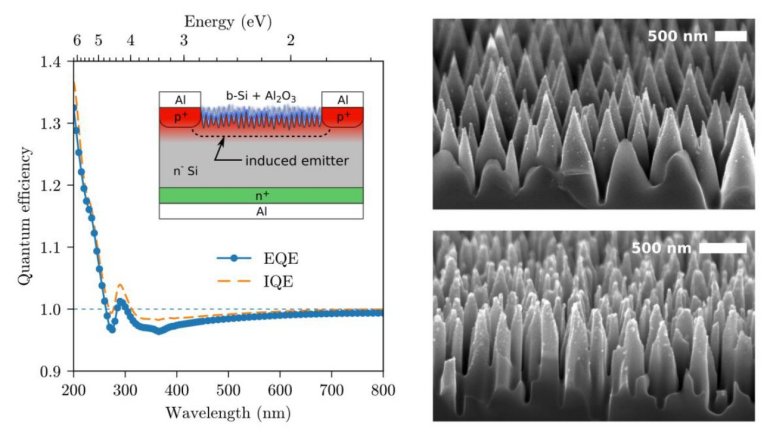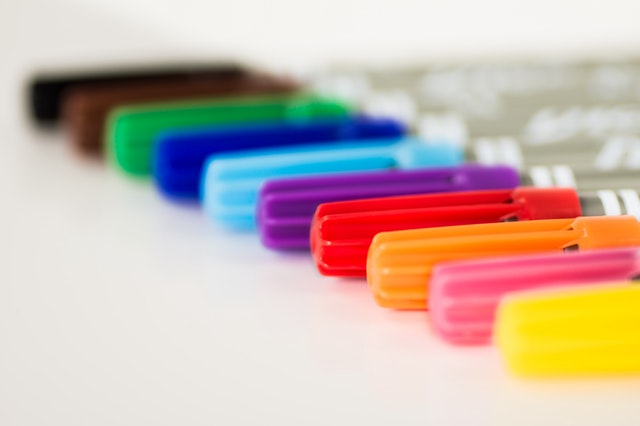For the first time, a photovoltaic cell has exceeded the limit of 100% efficiency, which was previously considered the theoretical maximum in terms of external quantum efficiency.
130% Efficiency Solar Cell
It is a photodetector made with black silicon , which reached efficiency above 130%.
The external quantum efficiency of a device is 100% when an incoming photon generates an electron for the external circuit – an efficiency of 130% means that an incoming photon generates approximately 1.3 electrons.

[Image: M. Garin et al. (2020)]
“When we saw the results, we could hardly believe our eyes. We immediately wanted to check the results by independent measurements,” said Professor Hele Savin, from Aalto University, Finland. Independent measurements were carried out by the German National Metrology Agency (PTB).
“After seeing the results, I immediately realized that this is a significant advance and, at the same time, a very welcome advance for us metrologists who dream of higher sensitivities,” said Lutz Werner, responsible for the measurements.
Quantum efficiency
The team found that the origin of the exceptionally high external quantum efficiency lies in the process of multiplying the charge carriers within the black silicon nanostructures, a process that is induced by high-energy photons. The phenomenon has never been observed before in real devices, since the presence of electrical and optical losses in materials normally reduces the number of electrons collected.
In practice, record efficiency means that the performance of any device that uses light detection can be dramatically improved – from individual photon sensors for quantum computing to solar cells .
“Our detectors are gaining a lot of attraction at the moment, especially in biotechnology and industrial process monitoring,” said Professor Mikko Juntunen, who is leading the effort to create a subsidiary company at Aalto University to market the new photovoltaic cells.
Bibliography:
Article: Black-silicon ultraviolet photodiodes achieve external quantum efficiency above 130%
Authors: M. Garin, J. Heinonen, L. Werner, TP Pasanen, V. Vähänissi, A. Haarahiltunen, M. Juntunen, H. Savin
Magazine: Physical Review Letters
Link: https://arxiv.org/abs/1907.13397





























Discussion about this post